Reviews
John Farrow
USA, 1953
Credits
Review by Josh Bell
Posted on 29 April 2013
Source 3D digital projection
Categories TCM Classic Film Festival 2013
We tend to think of movies from the early days of 3D as inherently gimmicky, constructed around awkward camera angles and objects constantly flying at the camera. But, as Leonard Maltin pointed out in introducing Hondo at the 2013 TCM Classic Film Festival, 3D back then was like 3D now, with the gimmicks often crowding out the handful of films that used the format effectively. It would be a stretch to say that Hondo is the Avatar or Life of Pi of 50s 3D, but it’s not just a gimmick, and at best it manages to use 3D in the same way the best 3D movies do now, to envelop the viewer in its world and provide a more immersive experience.
At worst, the 3D in Hondo is simply nonexistent, and there are only a handful of moments of obvious gimmickry, with the requisite pointy objects flying at the audience’s faces. The rest of the time Hondo is a solid if unspectacular John Wayne Western, with Wayne playing a familiar stoic, upstanding hero. He’s the title character, who wanders out of the desert onto the ranch of rugged pioneer Angie Lowe and her exuberant son Johnny. Hondo plans to stay only long enough to rest and acquire a new horse, after his was lost to the Apaches, but he feels drawn to Angie, despite the fact that she has a husband who’s busy rounding up wayward cattle and expected to be home soon.
That husband turns out not to be quite what Angie makes him out to be, and when the Apaches, on the warpath following the U.S. government’s breaking of its latest treaty, encroach on the Lowes’ ranch, Hondo is there to protect them. And sure, he kisses Angie without her permission and downplays her experience and value as an independent frontier woman, but he’s also scrupulously honest and respectful, even when it doesn’t benefit him (or even when it does the exact opposite).
And he’s far more respectful of the angered Native Americans than any of the American military officials are. Hondo claims to be “part” Native American (just how much, or in what way, he never says), and he spent five years living with the Apaches in what he describes as a wonderful way of life. He was even married to an Apache woman, whose beauty and grace he rhapsodizes about in one of the movie’s most striking moments. His greatest compliment for Angie is that she reminds him of his late Apache bride.
Wayne’s performance as Hondo is squarely within his comfort zone, but he gives a good sense of the character’s ambivalence about the changing nature of the American West. The Oscar-nominated Geraldine Page, in one of her first movie roles, plays up Angie’s toughness over her vulnerability, and even when she’s being manhandled, she never loses her steely resolve. Unsurprisingly, the movie’s depiction of Native Americans is anything but subtle, but Michael Pate adds some nuance to his performance as the proud chief (who is then ignominiously killed offscreen).
The climactic battle between the Apaches and the cavalry is a little too chaotic to take full advantage of the 3D, but the movie’s visual beauty sometimes shows up in expected places. Looking up at characters’ weathered faces, with the angry sky above, you can see a sort of poetic contrast that is more evocative than a thousand arrows coming right toward you.
More TCM Classic Film Festival 2013
-

Hondo
1953 -
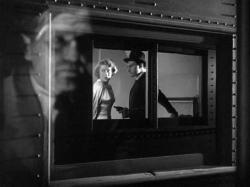
The Narrow Margin
1952 -

Giant
1956 -
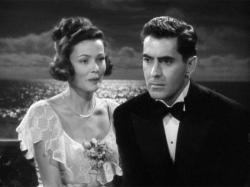
The Razor’s Edge
1946 -
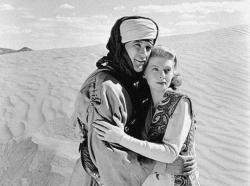
The Desert Song
1943 -
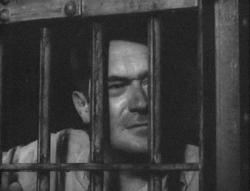
Try and Get Me
1950 -

It
1927 -

Scarecrow
1973 -
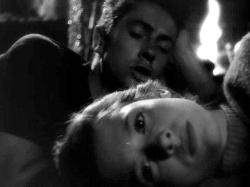
They Live by Night
1948
We don’t do comments anymore, but you may contact us here or find us on Twitter or Facebook.



